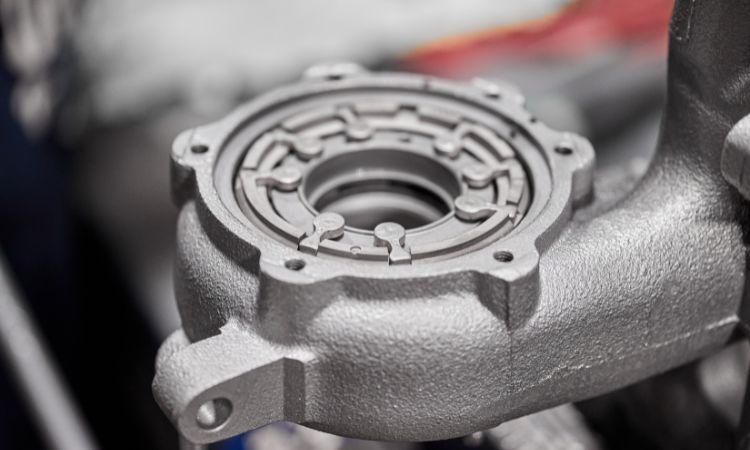The global automotive turbocharger hose market is being aided by the growing global automotive turbocharger market size, which stood at a value of around USD 13.31 billion in 2022. The automotive turbocharger industry is further expected to grow at a CAGR of 10% in the forecast period of 2023-2028 to reach a value of approximately USD 24.2 billion by 2028. These staggering statistics not only reflect the industry’s rapid expansion but also underline the pivotal role of turbocharging in today’s automotive landscape.
In the realm of sports cars, where power, speed, and performance reign supreme, turbocharging has played a transformative role. The marriage of turbochargers and sports cars has led to a revolution that has redefined the automotive world. In this blog post, we will explore the historical evolution, the impact on performance, fuel efficiency, and emissions, iconic turbocharged sports cars, technological advancements, motorsport applications, challenges, and the future of turbocharged sports cars.
I. The Historical Perspective
To understand the significance of turbocharging in sports cars, we must delve into its historical roots. Turbochargers have been an integral part of the automotive landscape for several decades, and their presence in sports cars has a rich history.
In the 1970s, the automotive industry witnessed a significant shift as turbochargers began to find their way into production sports cars. One of the pioneering turbocharged sports cars was the Porsche 911 Turbo, commonly known as the “911 Turbo” or “930 Turbo.” This iconic car, with its rear-engine layout and turbocharged power, became a symbol of performance and sophistication. Its 3.0-liter turbocharged flat-six engine produced 260 horsepower, a remarkable feat at the time.
Similarly, the BMW 2002 Turbo, introduced in 1973, marked BMW’s first foray into turbocharging. With 170 horsepower and a distinctive turbocharger badge on the front grille, it made a lasting impression on the sports car world.
II. Turbocharging’s Impact on Performance
One of the key reasons turbocharging has become so ubiquitous in sports cars is its remarkable impact on performance. Turbochargers operate on a simple principle: they force more air into the engine’s combustion chamber, allowing it to burn more fuel and generate more power.
In the context of sports cars, this translates into exhilarating acceleration and high-speed capabilities. Turbocharged engines produce more torque at lower RPMs, providing a surge of power right when the driver demands it. This “low-end torque” is particularly beneficial for sports cars, as it enhances off-the-line acceleration and improves overall drivability.
Moreover, turbochargers enable automakers to extract more power from smaller, more efficient engines. This downsizing strategy not only reduces weight but also improves fuel efficiency when the turbocharger is not spooling. For example, the Ford Mustang EcoBoost features a turbocharged four-cylinder engine that delivers impressive performance while offering better fuel economy compared to its larger, naturally aspirated counterparts.
III. Fuel Efficiency and Emissions
As the global automotive industry faces mounting pressure to reduce emissions and improve fuel efficiency, turbocharging has emerged as a critical technology. Turbochargers enable automakers to downsize their engines without sacrificing power, which is a win-win for both performance enthusiasts and environmental advocates.
By using smaller, turbocharged engines, sports car manufacturers can meet stringent emissions standards without compromising the driving experience. The turbocharger’s ability to deliver extra power when needed allows for smaller engines to perform like larger ones, all while consuming less fuel and emitting fewer pollutants during everyday driving.
In this era of turbocharged sports cars, it’s not uncommon to find models that combine high-performance capabilities with improved fuel economy and reduced emissions. This shift toward more eco-friendly sports cars is a testament to the adaptability and versatility of turbocharging technology.
IV. Iconic Turbocharged Sports Cars
Over the years, the automotive industry has witnessed the emergence of several iconic turbocharged sports cars. These models have left an indelible mark on the history of sports car manufacturing and have captivated enthusiasts worldwide.
-
Porsche 911 Turbo: As mentioned earlier, the Porsche 911 Turbo is a legendary figure in the world of turbocharged sports cars. With its timeless design and remarkable performance, it has continued to evolve through multiple generations, each one pushing the boundaries of what is achievable with turbocharging technology.
-
Nissan GT-R: The Nissan GT-R, affectionately known as the “Godzilla,” is another notable turbocharged sports car. Its twin-turbocharged V6 engine and advanced all-wheel-drive system have made it a dominant force on both the road and the racetrack.
-
Audi RS Models: Audi’s RS lineup includes several turbocharged sports cars, such as the Audi RS3, RS4, and RS5. These models combine cutting-edge technology with aggressive styling and exhilarating performance, showcasing the brand’s commitment to turbocharging excellence.
-
Ferrari F40: The Ferrari F40, produced in the late 1980s, is a classic example of a turbocharged supercar. With its twin-turbocharged V8 engine, it was the first road-legal car to exceed 200 mph, making it an automotive legend.
These iconic sports cars serve as a testament to the enduring appeal and performance potential of turbocharging in the sports car segment.
V. Advancements in Turbocharging Technology
Turbocharging technology has come a long way since its early days. Modern advancements have made turbochargers more efficient, responsive, and reliable than ever before. Some of the notable developments in turbocharging technology include:
-
Variable Geometry Turbochargers (VGTs): VGTs, also known as variable nozzle turbines (VNTs), have revolutionized turbocharging. They adjust the angle of the turbine vanes to optimize airflow at different engine speeds, virtually eliminating turbo lag and providing consistent power delivery across the RPM range.
-
Twin-Scroll Turbos: Twin-scroll turbochargers use a divided housing to separate the exhaust gases from different cylinders, reducing exhaust gas interference and improving throttle response. This technology is widely used in modern sports cars.
-
Electric Turbochargers: Electric turbos, or e-turbos, have gained attention for their ability to provide instant boost through the use of an electric motor. They work in conjunction with traditional exhaust-driven turbos, offering rapid response and eliminating lag.
These advancements have not only improved the driving experience but have also made turbocharged sports cars more efficient and environmentally friendly.
VI. Turbocharging and Motorsports
Turbocharging has made a significant impact on various forms of motorsport, pushing the boundaries of what is possible on the track. From Formula 1 to endurance racing, turbocharged engines have become a common sight in racing series around the world.
-
Formula 1: The Formula 1 grid has seen the widespread adoption of turbocharged hybrid power units, which combine a turbocharged V6 engine with energy recovery systems. This technology has redefined the sport by enhancing power while reducing fuel consumption and emissions.
-
Endurance Racing: In endurance racing, turbocharged engines have excelled due to their combination of power and efficiency. Cars like the Porsche 911 GT2 RS and Ford GT have showcased the capabilities of turbocharging in grueling races like the 24 Hours of Le Mans.
-
Rallying: Turbocharging has played a crucial role in the world of rallying, with turbocharged four-cylinder engines dominating the sport for decades. Rally cars like the Subaru Impreza WRX and Mitsubishi Lancer Evolution have become legends thanks to their turbocharged powerplants.
The influence of turbocharging in motorsports has not only improved the performance of race cars but has also driven advancements in road car technology, leading to better, more powerful, and more efficient sports cars.
VII. Challenges and Considerations
While turbocharging offers numerous benefits, it is not without its challenges and considerations. Here are some key points to keep in mind:
-
Turbo Lag: Turbo lag, the delay in power delivery as the turbocharger spools up, can be a concern in some applications. However, modern turbocharging technology has greatly mitigated this issue through innovations like VGTs and twin-scroll turbos.
-
Maintenance: Turbochargers are precision-engineered components that require regular maintenance. This includes oil changes and ensuring proper cooling to extend their lifespan.
-
Reliability: While turbochargers have become more reliable over the years, extreme stress on the engine can lead to wear and tear. Choosing a reputable manufacturer and using high-quality materials is crucial for long-term reliability.
-
Cost: Turbocharged engines can be more expensive to produce and maintain than naturally aspirated counterparts. However, their benefits in terms of performance and efficiency often outweigh the initial cost.
VIII. The Future of Turbocharged Sports Cars
As we look ahead, the future of turbocharged sports cars is bright and promising. Advancements in technology, combined with the growing emphasis on electrification, are shaping the next generation of high-performance vehicles.
-
Hybrid Powertrains: Hybrid powertrains, which combine internal combustion engines with electric motors, are becoming increasingly common in sports cars. Turbocharging complements hybrid systems by providing additional power when needed, resulting in impressive acceleration and improved efficiency.
-
Electric Turbochargers: Electric turbochargers, as mentioned earlier, are poised to play a significant role in the future of sports cars. They can provide instant boost, improving responsiveness and performance, especially in hybrid and electric sports cars.
-
Performance and Sustainability: Future turbocharged sports cars will likely strike a balance between performance and sustainability. Automakers will continue to innovate to meet stricter emissions standards while delivering exhilarating driving experiences.
-
Advanced Materials: The use of advanced materials like lightweight alloys and carbon fiber will contribute to enhanced performance and fuel efficiency in turbocharged sports cars.



